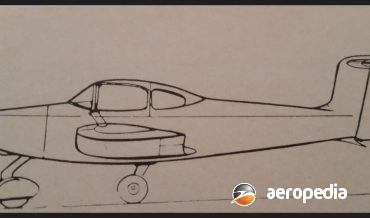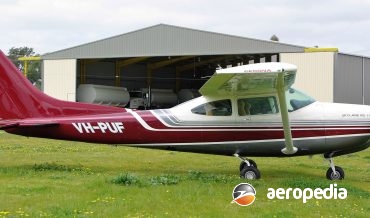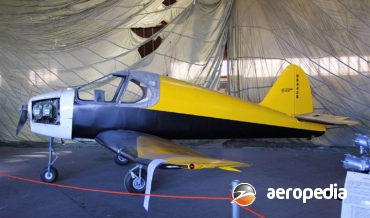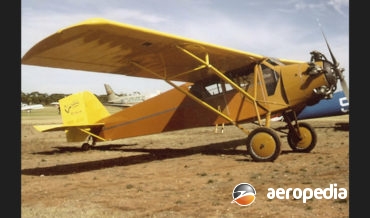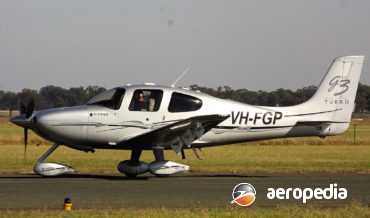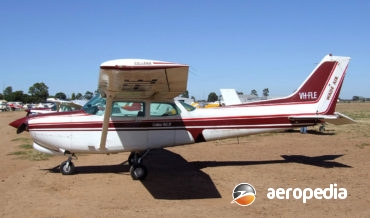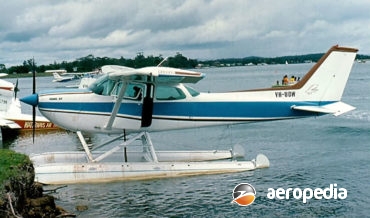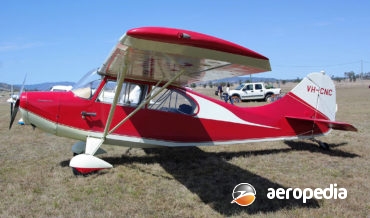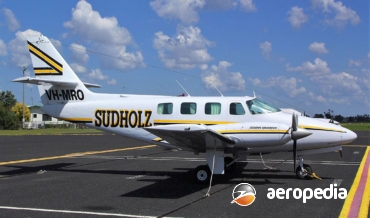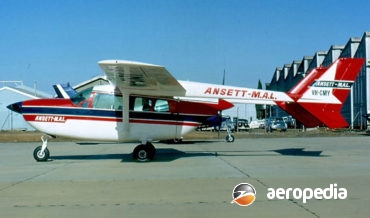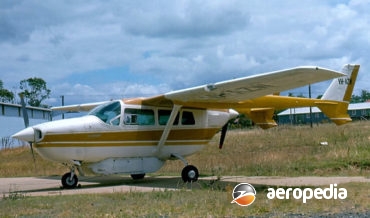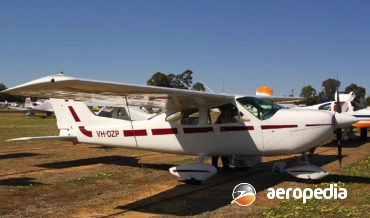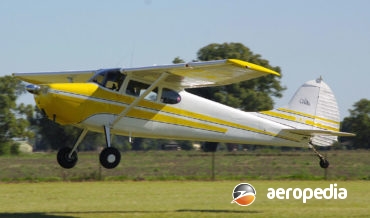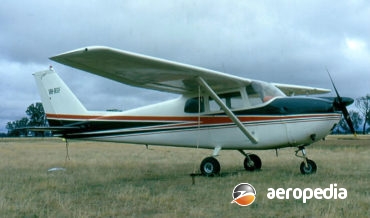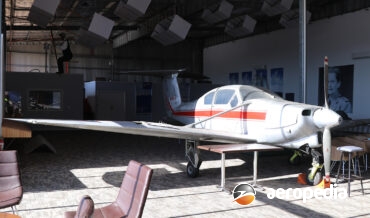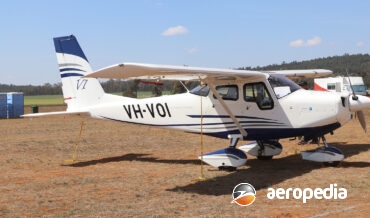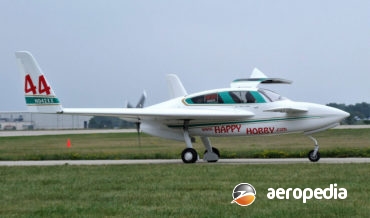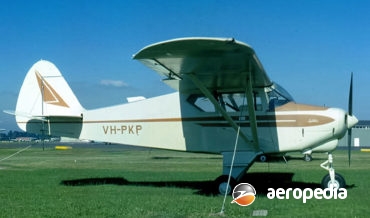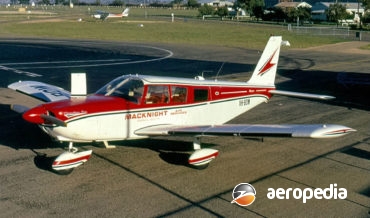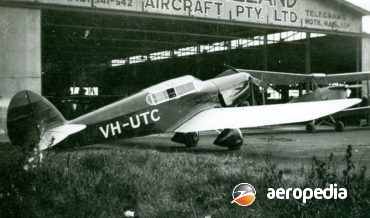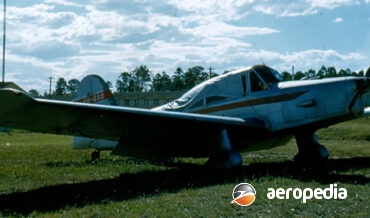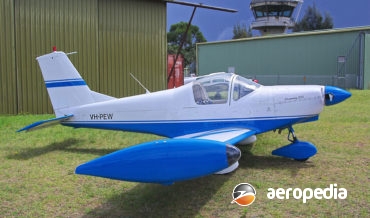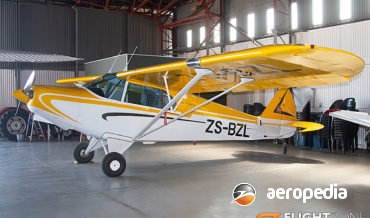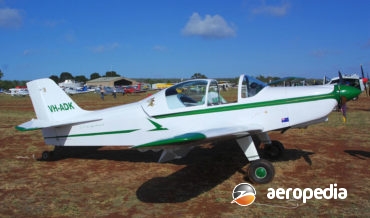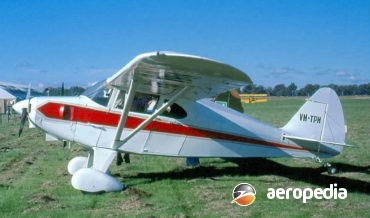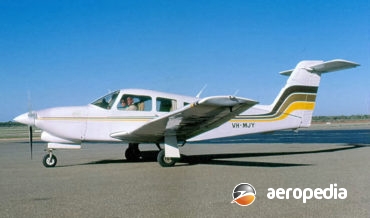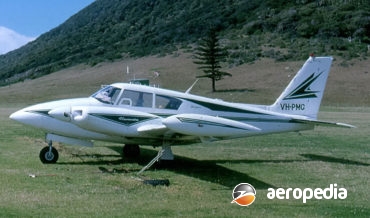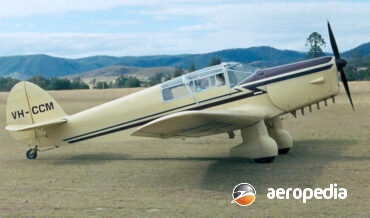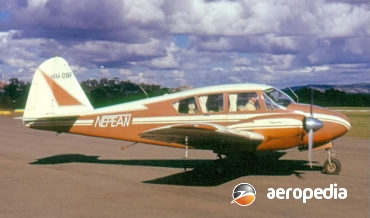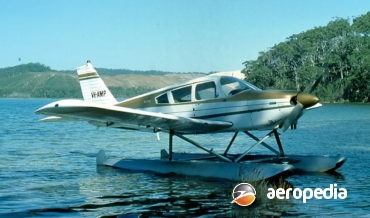All Contents
Contents
In late 1957 the Royal Queensland Aero Club (RQAC) announced that at its instigation preliminary design work had begun
on a four-seat fully-aerobatic monoplane known as the PL-9, and that it was to be constructed at the Aero Clubs workshops at
Archerfield, Qld.
David C. Eyre
- March 23, 2020
Following the production of almost 17,000 Cessna 182 Skylanes, Cessna in 1977 decided to build a model of the well proven design with a retractable undercarriage, thus providing an aircraft with the proven reliability of its predecessor with the increased speed and fuel efficiency of a retractable undercarriage.
David C. Eyre
- March 23, 2020
Rene Couzinet was one of the early French aircraft designers, one of his aircraft, the Couzinet 10 (c/n 1 - Arc-en-Ciel) with three engines crossing the South Atlantic Ocean in 1933 on a return trip from Paris to Argentina.
David C. Eyre
- May 17, 2019
The Culver Cadet series of light aircraft was designed by Al Mooney and built by the Culver Aircraft Company of Wichita Kansas as a two-seat small side-by-side all-wood construction light aircraft fitted with a 60-kw (80-hp) Franklin 4AC-176-D engine.
David C. Eyre
- May 17, 2019
One of a range of aircraft produced in the United States just before the Great Depression of the thirties, the Robin still sold well, with more than 700 examples produced.
David C. Eyre
- May 17, 2019
Designed essentially as a touring monoplane for the eastern-block countries, but also available for sale to western nations, the Meta Sokol was built by the Avia factory of the Czechoslovakian National Aircraft Industry at Chocen.
David C. Eyre
- May 17, 2019
The Cirrus SR-20 was developed by the Cirrus Design Corporation in Minnesota and is a all-composite design with a fixed undercarriage seating four with a 149-kw (200-hp) Teledyne Continental IO-360 engine and is manufactured at the company’s facility at Grand forks, North Dakota.
David C. Eyre
- May 17, 2019
Following the success of the SR-20 series, Cirrus developed the larger and more powerful SR-22 series, the first of which was shown at the United States Aircraft Owners and Pilots Association meeting in Florida in 2000.
David C. Eyre
- May 17, 2019
The first Cessna Model C-34 was completed in June 1935 at Cessna’s Wichita, Kansas, plant, and shortly thereafter it was entered in the All Kansas Tour (1,609 km -1,000mile) when it easily won a 40 km (25 miles) free-for-all race. Fitted with a Warner Super Scarab engine, the Model
David C. Eyre
- May 17, 2019
The Cutlass RG was introduced to the Cessna range in late 1979 (although described as a new model for 1980) as a variant of the Model 172 Skyhawk with a retractable undercarriage, in order to compete with the very successful Piper Cherokee Arrow, a variant of the Cherokee with a
David C. Eyre
- May 17, 2019
The Hawk XP was designed and developed to meet customer demand for a more powerful version of the Model 172 Skyhawk. Introduced into the Cessna range during 1977, the Hawk XP offered a higher performance with considerably more power, but still remained moderately priced on the market.
David C. Eyre
- May 17, 2019
The Champion series of aircraft was introduced in 1946 by the Aeronca Manufacturing Corporation and subsequently it and a number of other manufacturers developed the design in various models, with various power plants.
David C. Eyre
- May 17, 2019
The Cessna 190 and 195 series of aircraft was a large, very comfortable, five-seat cantilever, high-wing monoplane produced by the Cessna Aircraft Company in the USA between 1947
David C. Eyre
- May 17, 2019
The Model 210 was introduced to the Cessna range in 1959 as an intermediate model between the 182 and the twin-engine 310
David C. Eyre
- May 17, 2019
On 14 February 1978 Cessna flew a new light-weight twin-engined series of aircraft knownas the Model 303.
David C. Eyre
- May 17, 2019
Introduced into the Cessna range of aircraft in 1963, the Model 336 Skymaster was unique at that time amongst business light twin-engine aircraft as it had a tractor engine in the nose
David C. Eyre
- May 17, 2019
The Cessna Model 337 Super Skymaster series was introduced to the company’s range in February 1965 to replace the Model 336 on the production line. It continued the centre-line thrust concept of the previous model, and bore a close resemblance to that aircraft.
David C. Eyre
- May 17, 2019
The Cessna 177 series of aircraft, which was first placed in production in 1967, was originally released in two main models, the 177 and the Cardinal.
David C. Eyre
- May 17, 2019
The Cessna 182 Katmai Super STOL is a development of the Wren 460 (which see) which itself was developed in the 1960s and was a conversion of the basic Cessna 182 series to achieve outstanding short field performance.
David C. Eyre
- May 17, 2019
The Model 170 was introduced into the Cessna range in 1948 as a development of the earlier two-seat light cabin monoplanes, the Models 120 and 140, and to meet a requirement among operators in the United States for four seats.
David C. Eyre
- May 17, 2019
The Cessna 175 series was introduced to the Cessna range in 1958. The Skylark was a deluxe version of the basic 175, in a similar way to the Skyhawk being a deluxe development of the 172.
David C. Eyre
- May 17, 2019
The Cessna 177 Cardinal RG was introduced into the Cessna range in 1970 and is basically a variant of the 177 series with a hydraulically retractable tricycle undercarriage.
David C. Eyre
- May 17, 2019
The Aircruiser was a low-wing, fixed tricycle-undercarriage, four-seat aircraft of light alloy all-metal construction designed by Henry Millicer.
David C. Eyre
- May 8, 2019
The Victa R-2 was a four-seat light monoplane designed for Victa Ltd by Mr Luigi Pellarini, designer of the Transavia Airtruk and a number of other aircraft.
David C. Eyre
- May 8, 2019
The prototype of this new generation of touring and training aircraft was flown by Paul Southwick, an AOPA test pilot, at the company’s facility in Naples, this aircraft being registered I-PDVA.
David C. Eyre
- May 8, 2019
The Velocity is marketed in kit form by Velocity Aircraft of Sebastian, Florida, as a high-performance touring aircraft seating four.
David C. Eyre
- May 8, 2019
The Piper Colt was designed by the Piper Aircraft Corporation as a cheap ‘everymans aeroplane’ to sell in the United States for below $5,000 in the early 1960s.
David C. Eyre
- May 8, 2019
The Cherokee Six series of aircraft emanated from the PA-28 Cherokee series, which was first released in the early 1960s.
David C. Eyre
- May 8, 2019
The series of aircraft stemming from the Gull were all-wood low-wing monoplanes designed by Edgar W Percival, the Australian who founded Percival Aircraft Ltd.
David C. Eyre
- May 8, 2019
The Prentice was designed by Percival Aircraft to meet specification T23/43 for a three-seat basic and radio-navigational trainer for the RAF to replace the Tiger Moth in RAF service. The prototype (TV163) flew for the first time on 31 March 1946 and subsequently production of the T.1 model began for
David C. Eyre
- May 8, 2019
The prototype of the Pazmany series of aircraft, the PL-1 Laminar, was flown for the first time on 23 March 1962.
David C. Eyre
- May 8, 2019
In the late 1940s Piper Aircraft Corp at Lock Haven, Pennsylvania was looking at producing a four-seat high-wing monoplane along the lines of the PA-12 Super Cruiser and it became known as the PA-14 Family Cruiser, this being achieved by widening the fuselage by 10.16 cm (4-in) and it was
David C. Eyre
- May 8, 2019
Designed in France by M Claude Piel, the prototype of the Emeraude (Emerald) series, known as the CP-30, was flown for the first time in 1952 powered by a 48-kw (65-hp) Continental engine.
David C. Eyre
- May 8, 2019
The Piper J-2 Cub first appeared in 1936 as a simple two-seat in tandem, training monoplane designed by the brothers C Gilbert and Gordon Taylor
David C. Eyre
- May 8, 2019
The Piper PA-20 Pacer, introduced in 1949, was a development of the PA-16 Clipper, which was in turn a development of the PA-15 Vagabond. The PA-16 was fitted with a 86-kw (115-hp) Lycoming four-cylinder engine.
David C. Eyre
- May 8, 2019
The Cherokee Arrow, which was added to the Cherokee range of light touring aircraft in June 1967, was virtually a retractable-undercarriage version of the fixed-undercarriage Cherokee.
David C. Eyre
- May 8, 2019
The Twin Comanche series was designed to fill a market need for a small economical multi-engined machine which would provide day, night and all-weather utility, geared to small airports and short fields.
David C. Eyre
- May 8, 2019
Following the establishment by Percival Aircraft of its own manufacturing facility at Gravesend Airport in Kent, a new model of the Gull series was announced, this being a similar to the Gull IV but with a single-strut undercarriage, revised cabin top, and entrance doors, the main change being the installation
David C. Eyre
- May 8, 2019
Known initially as the Piper Twin Stinson, the prototype of the PA-23 Apache series was flown for the first time on 2 March 1952.
David C. Eyre
- May 8, 2019
When the Cherokee was released, it was the first completely new model from the Piper stable for some time, and it represented a major change in design philosophy for the company.
David C. Eyre
- May 8, 2019
Recent Comments
Archives
Categories
- No categories
Categories
- No categories
Latest Posts
Newsletter

